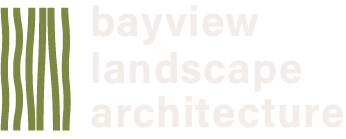
NYCHA Eastchester Gardens Campus
TRANSFORMING FRAGMENTED SPACES INTO A THRIVING COMMUNITY HUB
Multifamily Residential
Once characterized by underused courtyards and fenced-off lawns, the 26-building Eastchester Gardens campus in the Bronx was reimagined as a cohesive, welcoming environment that supports everyday living, community gathering, and long-term resilience for its 2,000 residents. This PACT-funded initiative addressed the fundamental challenge of creating equitable access to green space while navigating the complex realities of public housing development—balancing resident needs with regulatory requirements, maintenance capacity, and budget constraints to build a landscape that works in harmony with natural systems and responds directly to community priorities.
-
Completion Date: 2023-ongoing
Location: The Bronx, New York
Size: 13.9 acres
Clients: New York City Housing Authority
Collaborators:
Developer — MDG Development
Architect — Aufgang
Builder — Infinite Horizons
Landscape Construction — Steven Dubner Landscaping
Resident's Association President — Keith Ramsey
Future Property Management — Wavecrest
Historical Consultant — Heritage
OPENING THE GATES
For years, residents had been separated from their own green spaces by perimeter fencing that blocked access to lawns and courtyards across the campus. The design team recognized that true environmental justice begins with removing barriers—both physical and social—that prevent communities from accessing the restorative benefits of nature. Working within PACT program requirements and collaborating with MDG Development's community engagement process, we strategically removed fencing and created ADA-accessible pathways throughout the site, transforming isolated patches of green into a connected network of spaces. The centerpiece of this approach is a new accessible path that leads directly to the community tree at the heart of the campus—a design decision that emerged from resident input sessions and symbolically roots the community in their shared landscape.
Features
Flood Resiliency & Blue Infrastructure, Urban Design, Community Engagement, Native Planting, ADA Compliant Design, Planting Design, Wayfinding & Signage Design, Playground Design, Natural Play Amenities, Walking Loop, Event Lawn, Site Furnishings, Pergola & Shade Structure, Community Garden, Historic Preservation
ENGINEERING RESILIENCE
The site's chronic flooding issues demanded a comprehensive approach to managing water resources onsite rather than simply directing runoff elsewhere. We integrated permeable paving systems and strategically placed trench drains that capture and filter stormwater, allowing the landscape itself to become a high-performance infrastructure system. A carefully designed gabion wall adjacent to areas prone to leaf accumulation allows water to flow freely while trapping debris, demonstrating how thoughtful design can work with natural processes. This blue infrastructure approach not only addresses immediate drainage concerns but builds long-term resilience into the community's daily environment.
CULTIVATING COMMUNITY
The challenge of designing spaces that serve 2,000 residents across multiple generations required understanding how different groups use outdoor space while working within the strict budgetary and maintenance constraints of public housing development. Through resident engagement meetings facilitated by MDG Development and community committees formed specifically for this project, we developed a design that balances active and passive recreation within realistic operational parameters. The central lawn provides flexible space for large gatherings and informal play, while the redesigned senior center features community garden plots, game areas including bocce and shuffleboard courts, and shaded seating under a new pergola—amenities selected based on resident feedback and maintenance feasibility. Age-inclusive play elements ensure that children of all abilities can engage with the landscape, while an exercise loop and dedicated dog park provide amenities that encourage daily use and social interaction, all designed with durability and long-term stewardship in mind.
RESTORING THE ECOSYSTEM
Rather than relying on high-maintenance ornamental plantings, we selected a robust palette of native and climate-adapted species that support local biodiversity while requiring minimal long-term care. Native trees like Amelanchier canadensis (Canadian Serviceberry) and Nyssa sylvatica (Tupelo) provide seasonal interest through spring flowers and brilliant fall color, while native shrubs including Clethra alnifolia 'Hummingbird' (Summersweet) and Viburnum dentatum 'Blue Muffin' (Arrowwood Viburnum) create habitat for pollinators and birds through their fragrant flowers and berry production. These plantings improve air quality and provide the sensory richness that makes outdoor spaces feel alive and welcoming. The planting design also addresses public safety concerns by maintaining clear sightlines at building entrances while creating lush, immersive experiences in gathering areas. This approach ensures the landscape's beauty and ecological health will flourish for years to come, supported by natural systems rather than intensive maintenance.
The transformation of Eastchester Gardens demonstrates how thoughtful landscape architecture can address multiple challenges simultaneously—from environmental justice and flood resilience to community building and ecological restoration—while operating within the real constraints of public housing development. The ongoing construction process continues to negotiate between resident aspirations, regulatory requirements, and budget realities. What emerges is not just a more beautiful campus, but a living system that supports both human well-being and environmental health, designed to evolve and adapt as the community grows and changes over time.







